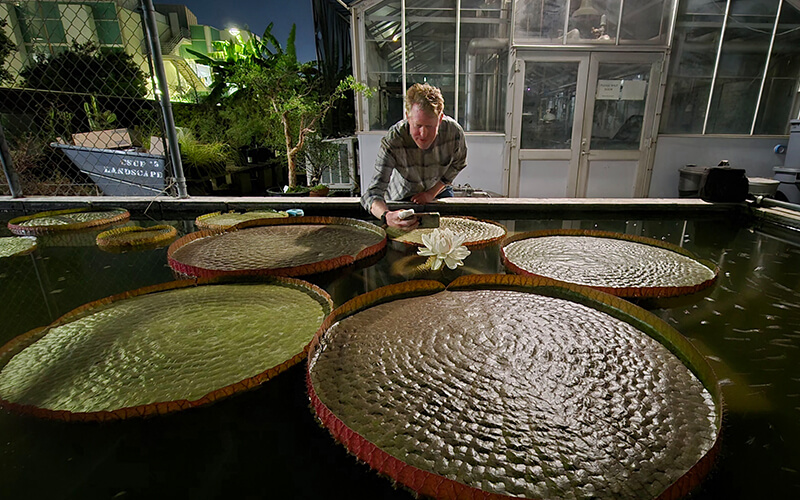
For the first time since its inception in 1963, Cal State Fullerton’s Biology Greenhouse Complex has a rare flower that bloomed this week: the Victoria amazonica water lily, which is the second largest water lily in the world.
The flowers of this lily only last about two days before they drop back down below the surface of the water. A new flower bud is expected to emerge in a few days.
The Biology Greenhouse Complex houses a diverse teaching collection, from in which plants are used for class lectures, labs and research. For the past three months, Edward Read, Biology Greenhouse Complex manager, coaxed the lily into bloom after three previously failed attempts to grow the Victoria amazonica since 2012.
“The temperature of the water, the clay soil and the compost all worked together to make a rich environment for this plant to thrive,” Read said.
This plant is native to tropical regions in South America, specifically in Guyana and the Amazon basin, but it is not always easy to grow in Southern California. In a makeshift pond made with cement cinder blocks outside of the greenhouse, the lily grew multiple, large, round, thorny leaves with the largest spanning 37 inches in diameter.
Read is known for cultivating rare and exotic plants at Cal State Fullerton. Several times in the last decade, he has displayed the rare corpse flower, Amorphophallus titanum, one of the largest inflorescences in the world.
“I like new challenges,” Read said. “After I completed growing the corpse flower and had about two dozen blooms, I needed another challenge. I thought growing this water lily would be a good one not only because it’s technically difficult, but also because I wanted to grow something rare and beautiful for the students to see.”